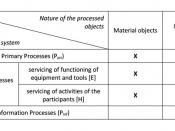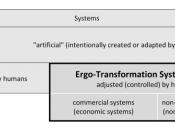System Approach to Organization
Modern Theory - System Analysis of Organizations
Modern Theory, has been developed since the 1950s, is the third major classification of theories of theories of organization and managements. It has a number of characteristics and takes the systems viewpoint and is dynamic.
Modern Theory may be considered a general theory of organization and management, integrating classical and Neoclassical with contemporary with contemporary theory. This is done by viewing an organization as a dynamic process that occurs within and, in general, is controlled by structure.
In performing the work, the manager should consider the strategic components of the organization system such as:-
A, the Individual Component (neo-classical theory) - which include attitudes, feeling, and personality traits, motives and other variables that help determine individual's behavior.
B, The Formal Organization Component - are the formal structure, the hierarchy of authority, the communications channels, and the pattern of relationship that it provides together with is objective, policies, procedures and other management devices that help to formalize and facilitate its operation,
C, The Informal Organization Component (Neo-Classical Theory) - it includes the standards and behavioral patterns that are imposed upon by its members by the work group (including those relating to informal leadership)
This component also includes informal systems for communication and the methods for short-cutting formal procedures.
D, The Role and Status Patterns Component (neo-classical, talking about people)- are those that are created by both the informal and the formal organizations, and by the backgrounds and the behaviors of the individuals who comprise these organizations.
These patterns, furthermore, are affected by the expectations and perceptions of employees with respect to their own particular role and status and those of others.
E, The Physical Setting Component - consists of such items as the tools, equipment, processes, and schedules...


